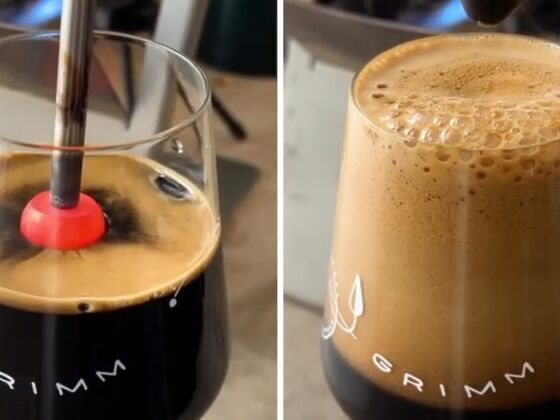Few beverages are as refreshing as a crisp, cold beer on a hot day. But in Germany, one of the leading beer consumers per capita in the world (hello Oktoberfest), you’re likely to experience all four seasons in a calendar year, meaning much of that beer consumption takes place in the absence of the summer sun. Naturally, Germans found a solution to the problem of drinking cold beer during the frigid winter months centuries ago. It’s called bierstacheln, and it involves plunging a fiery poker into a glass of beer to bring it up to a comfortable temperature.


Germany’s Caramelized ‘Beer Brûlée’ Is the Warmest, Creamiest Way to Drink Beer in the Winter
@foodwtf "Bierstacheln" is a traditional German process in which a metal bierstachel (“beer spike”) is heated above 1000° F and plunged into a beer, caramelizing the sugars and creating a thick layer of creamy foam with a toasted-marshmallow aroma 🎥 IG: @grimmales #beertok #beerlovers #foodie #foodtravel ♬ Fake ID X Walking On A Dream Carter Walsh Remix – CarterWalsh
The origins of bierstacheln
According to Weihenstephan, a German brewery and popular beer brand from the prolific beer-producing region of Bavaria, blacksmiths invented the tradition of “beer poking” or “beer spiking” ages ago. When it was too cold outside to drink beer directly, these blacksmiths supposedly came up with the idea of heating it up using their pokers, or spikes, which translates to “stachel” in German.
In doing so, the leftover malt sugar from the beer’s fermentation process starts to carmelize, which in addition to heating the beer also creates a rich, foamy head and decreases carbonation. This results in a creamy, malty beverage that’s smoother than a chilled beer.
Similar to how the dessert crème brûlée takes its name from the caramelization process of the sugar used to top the custard below, bierstacheln is sometimes referred to as “beer brûlée.”
What beers work best for bierstacheln
In theory, the bierstacheln concept can be applied to any beer, but because it relies on caramelization, it’s most successful in malt-forward beers with high residual sugar contents. Dark, bottom-fermenting lagers known as bock beers are particularly popular for bierstacheln in Germany (Weihenstephan recommends its dark Doppelbock Korbinian) but similar options such as Belgian dark strong ales would also work well.